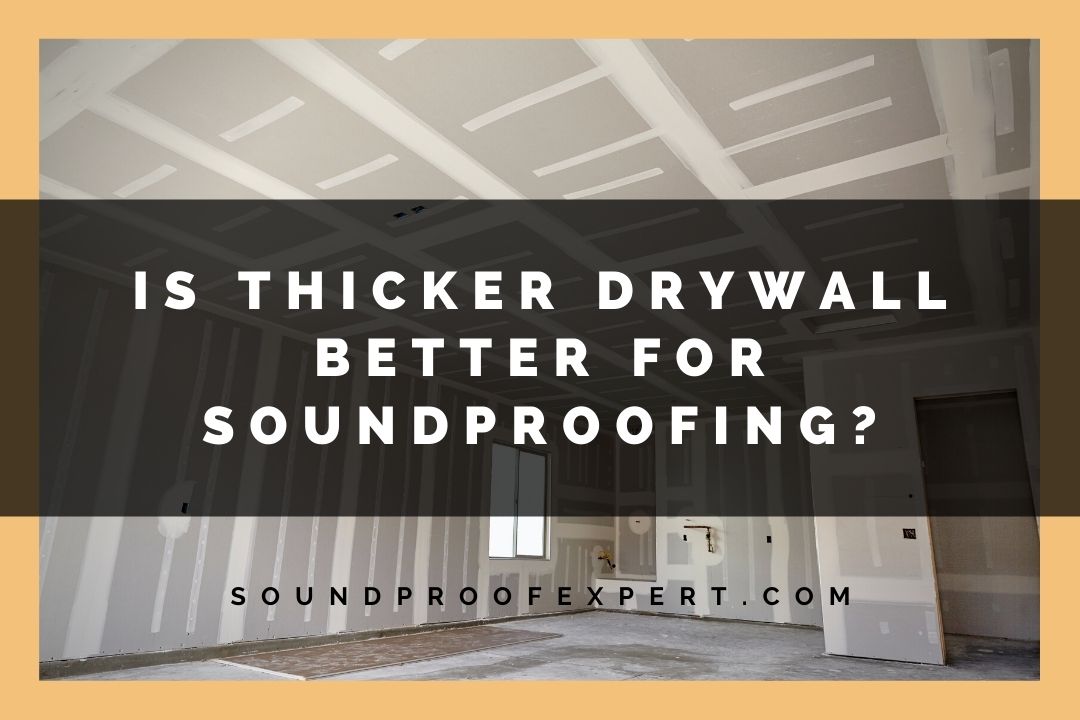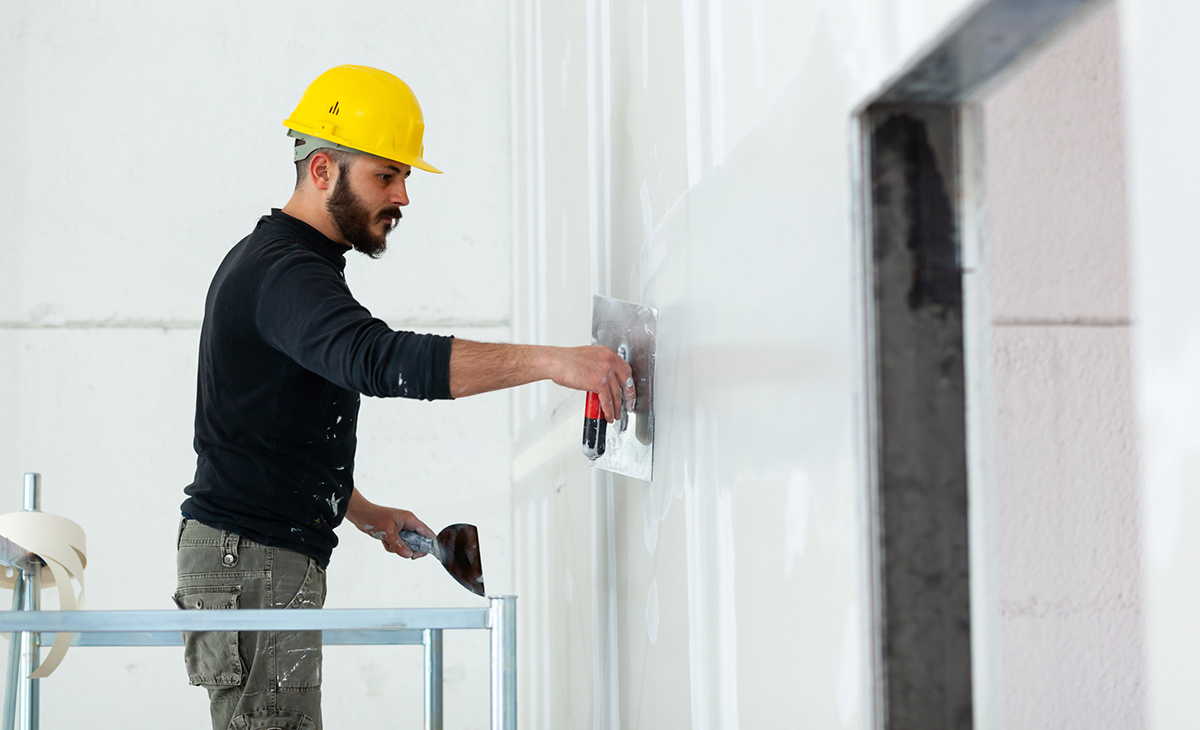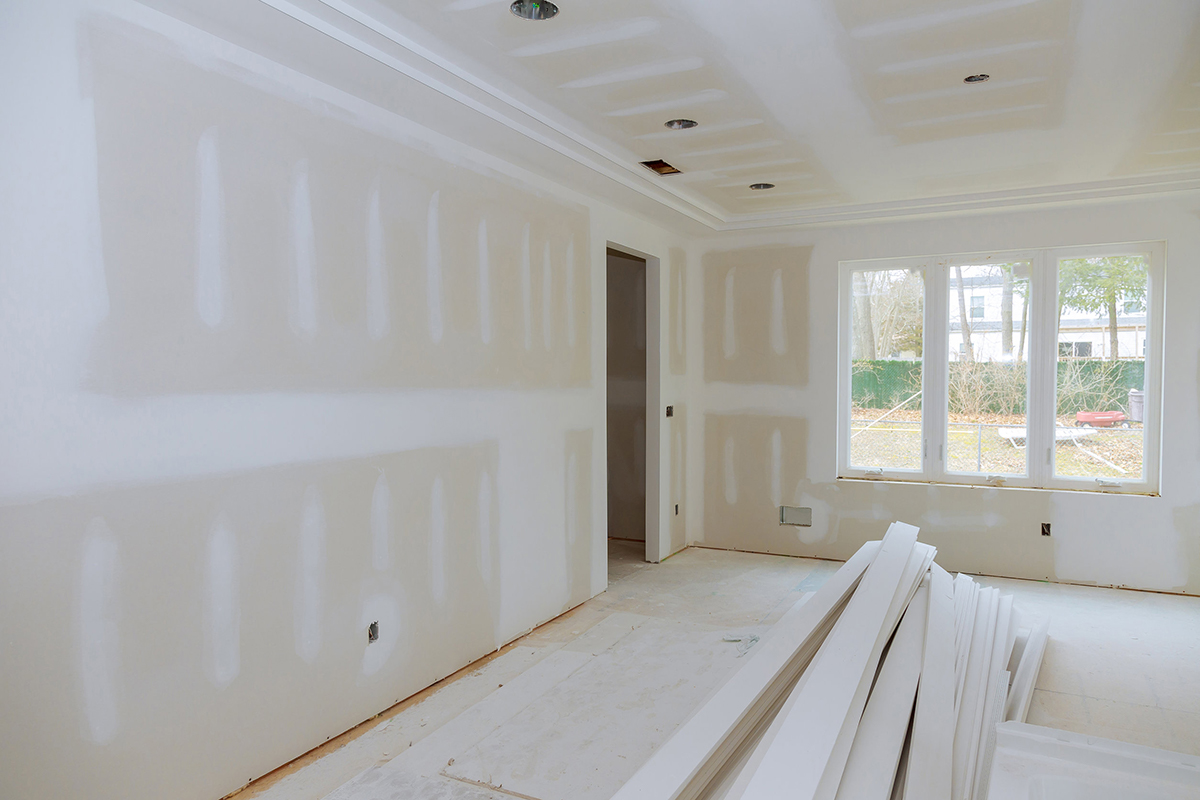
Drywall is very popular in the construction industry because it’s easily accessible and very malleable. You can use drywall in a wide range of applications, including soundproofing. Will making the drywall as thick as possible keep out sounds better?
Thicker drywall is better for soundproofing. However, there are other factors that can influence sound absorption in a room, including the design of the room and the makeup of the drywall. Drywall that has two sheets and an air cavity that’s 5-6 inches (12.7-15.24 cm) thick will be more soundproof.
The rest of the article will cover how thicker drywall helps with sound. You’ll also see how to make your wall soundproof with drywall and other approaches for keeping in sounds and keeping out noise.
How Thicker Drywall Can Help With Soundproofing
The acoustic science on how drywalls can help with soundproofing is complex and will require years of study to understand. As a homeowner, you should be concerned with the basic principles of how drywall can help block out sound.
The first rule you should be aware of is that increased mass leads to better sound absorption. Therefore, thicker drywall boards will block out more sound.
Secondly, the structural composition of drywalls makes them a better sound trap compared to concrete or wood. Drywall is mostly made up of calcium sulfate dihydrate, as well as other additives. This combination of materials is held in place by two thick sheets of paper, giving you a product that’s bound to absorb more sound.
Remember, for your drywall to be thick enough for soundproofing, you need to install at least two sheets while maintaining an air cavity at least 5-6 inches (12.7-15.24 cm) thick.
Factors That Can Affect the Efficacy of Soundproofing With Drywall
There are a few factors that can affect the overall results you’ll get when soundproofing your drywall, including:
- The overall design of the room. Your room design must allow the drywall to tightly fit at the seams so that you can ensure adequate noise reduction. If there are gaps between the boards and your floors or ceiling, there is a chance sound can either escape or come in through these gaps.
- Presence of vents and windows. Thick drywall will be ineffective if the room has adjoining vents and windows. For the material to work effectively, all sound pathways must be contained.
- Composition of the drywall. The materials used in the drywall construction can also affect its efficacy. Some drywalls feature acoustic panels that will enhance sound protection, while others may be wrapped with thicker material instead of paper to prevent sagging. These options will provide more sound absorption than typical drywall construction designs.
How To Soundproof a Room With Drywall
The process for soundproofing your room with drywall will vary depending on whether you’re carrying out fresh construction or just remodeling the space. New constructions are more straightforward to work on, while remodeling projects may require some demolishing to get the result you’re looking for.
Soundproofing Newly Constructed Rooms
You’ll get better soundproofing results if you’re working on a room that you’re constructing from scratch.
The process for soundproofing such a room involves filling the cavity between the ceiling joists and the wall stud using excellent sound-absorbing material such as rock wool insulation.
After filling the cavity, install two layers of drywall. The drywalls should sandwich some layers of a noise-proofing compound.
Green Glue Noiseproofing Compound (available on Amazon.com) is one of the options available to you. It’s easy to use and can cure in minutes. Once the drywall is mounted, complete the installation by using some acoustic sealant around the cutouts and gaps. Repeat the process for the ceiling area to get a soundproof room.
However, attaching drywall to ceiling tiles is slightly more challenging, and you’re sure to need extra help.
If the room is under a living space, you’ll need to spend a bit more time blocking out the impact noise from above. Cover the floor with some heavy underlayment first if you have access to the space before coming back to install the drywall to the ceiling beneath.
Soundproofing Existing Walls and Ceilings
When you’re looking at soundproofing existing walls and ceilings, the biggest part of the process is to add more mass to the existing drywall.
There are two approaches you can take here: you can either double or triple the drywall layer or tear down the old sheetrock to reach the wall cavity.
If you can reach the studs on the interior wall, change the insulation to more efficient acoustic fiberglass insulation. Once you’ve installed the new insulation, you can add new layers of drywall using the process we highlighted above for new constructions.
If you already have decent noise blocking and just need an extra boost, you can complete the process without tearing down anything. You just need to go straight to installing your second layer of drywall. Apply some of the Green Glue compound mentioned above between the old drywall and new installation. When the drywall is mounted, seal all floor gaps, seams, and electrical cutouts using some acoustic caulk.
Additional Tips
The above section covers all the basics of soundproofing using drywalls. The process is straightforward and can be completed without professional help if you have some DIY experience. You will just need to enlist an extra pair of hands to help you carry and hold up the drywall, especially when working on the ceiling.
For the best experience, you’ll need to install acoustic panels and bass traps after installing the drywall. With these treatments, sounds in the room won’t feel muddled. Your movies and music will sound better, and conversations with other people in the room will be a lot more comfortable. Bass traps may seem a bit overkill if you don’t intend to record podcasts or music in the room, but they do contribute to better sound quality.
The Audiosoul Acoustic Panels (available on Amazon.com) work well for your walls. They’re high-density panels offering professional-grade sound absorption.
For bass traps, you can go with TRUE NORTH Bass Traps (available on Amazon.com). They’re easy to install, and there’s a money-back guarantee if you’re not happy with the results.
Final Thoughts
Thicker drywall works well for soundproofing because more mass absorbs more sound waves. However, you need to get the installation right and include all the relevant accompaniments for the best result.
If, after your best efforts, you still find sound coming through, you should consider extending the soundproofing to your doors and windows using acoustic curtains and soundproof window plugs.


